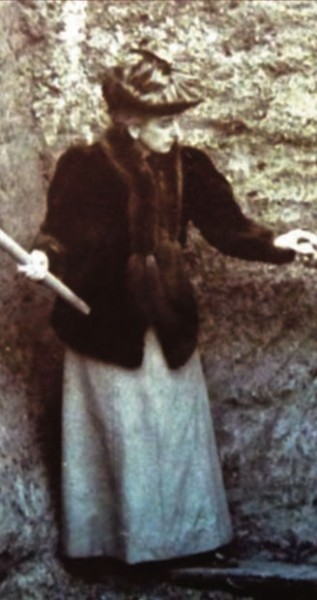Nina Layard isn’t a household name, but she definitely should be. The way that she pushed the boundaries in male-dominated fields was hugely significant and inspiring for young women looking for role models in archaeology, prehistory and geology.
Nina was born in Stratford, Essex in 1853 into a family of history and archaeology lovers – her father’s cousin, Sir Henry Austen Layard, was the excavator of Nineveh. Nina began collecting eggs and shells at a young age and despite not having a formal education, she began participating in archaeological digs and learning new skills. At the time, the majority of people working on these sites would have been men, well-educated and wealthy men at that, so Nina’s presence was a real breakthrough.
Within a few years of moving to Ipswich, Suffolk, Layard directed her first excavation at Blackfriars monastery. During this dig she discovered the foundation walls of various medieval buildings, including the medieval religious house of Friars-preachers. This find made a massive contribution to the understanding of local history and the archaeology of the town. Then between 1902-05, Nina oversaw the excavations of a local palaeolithic site at Foxhall Road, Ipswich. This was her greatest contribution in the field as the discoveries she made provided vital evidence of human life before the Ice Age. Objects she found also showcased new processes of stone tool manufacture and usage.
Another significant excavation that Layard led was an Anglo-Saxon cemetery at Hadleigh Road, Ipswich, where her and the team documented 159 graves and the goods inside them. The objects that her team found at these sites were donated to Ipswich Museum and some of the objects collected are displayed in the Anglo-Saxon and Roman galleries. By displaying Nina’s archaeological work and achievements is a refreshing addition to the stories told from the field as many histories relate to men.
Alongside Nina’s brilliant contributions to the practical side of archaeology, she was also a front-runner in the academic arena. She was the founder member and President of the Prehistoric Society of East Anglia and she was made a Fellow of both the Anthropological Institute and the Linnean Society. Then in 1921, when women were finally allowed into the Society of Antiquaries, Layard was one of the first to become a Fellow. Her acceptance into these societies was hugely significant because many of these organisations were traditionally gatekept by men. Breaking into this domain opened doors for women who wanted to enter archaeology and prehistory whilst also acting as a role model for young women who needed proof that you could succeed in the field.
As a Suffolk local, I am inspired by Nina Layard’s story. She made such important contributions to both archaeological and prehistory and did so by excavating sites that are local to me. On the 8th October 2016, a blue plaque commemorating Layard was unveiled by members of the Ipswich Women’s Festival Group on Unicorn House, Foundation Street (near the Blackfriars site) in Ipswich. The fact that a woman is celebrated in such a permanent and significant manner shows how important Nina’s work is to society.
-Emily Clarke
Junior Girl
GIrl Museum Inc.
Sources:
https://www.suffolkarchives.co.uk/displays-online/pride-in-suffolks-past/nina-frances-layard/
http://www.ipswichsociety.org.uk/newsletter/newsletter-april-2014-issue-195/nina-frances-layard-1853-1935/
http://www.ipswichwomensfestivalgroup.co.uk/ipswich-women/nina-layard/
https://www.flickr.com/photos/ipsoc/33361563975/in/album-72157650281241425/

